How do oak trees help wildlife?
In Britain, oak trees host at least 280 species of insect – more than any other native tree.
These feast on the seeds, wood, flowers and foliage, so during their growing season oaks face onslaughts from armies of leaf-chewers, sap-suckers, leaf-miners and galls.
None forms a more crucial link in woodland food-webs than the leaf-eating larvae of three moths: the mottled umber, winter moth and green oak tortrix, which can sometimes defoliate entire branches.
In spring, these moths’ eggs hatch and their caterpillars provide food for tits, pied flycatchers and other songbirds; at the height of the breeding season, a pair of blue tits may feed 700 caterpillars to their nestlings each day.
Tits and flycatchers – for which oaks also provide nest sites in tree-trunk cavities – synchronise their egg-laying with oak bud-burst and the hatching of moths’ eggs.
If either event moves by only a couple of weeks, it can have a huge impact on the birds’ breeding success.
Shifts in the timing of these short-lived bonanzas, possibly caused by climate change, are particularly serious for a long-distance migrant such as the pied flycatcher, which times its arrival at its European breeding grounds so that hatchlings can feast on larval bounty.
Why not grow your own? Here's how to grow your own oak tree from an acorn
How many species of oak grow in the UK?
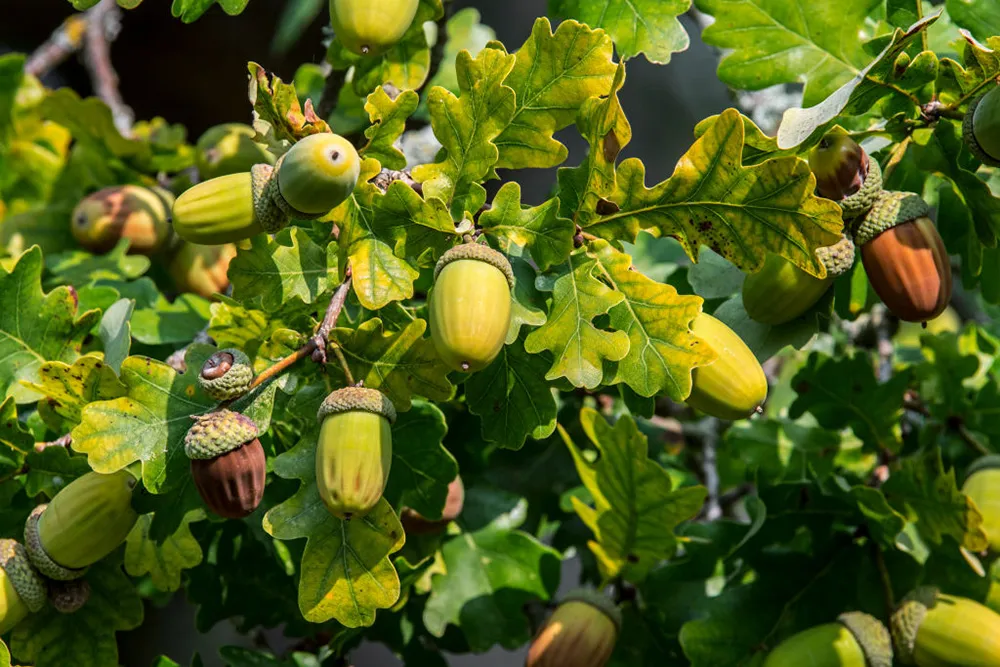
There are five species of oak trees growing in the UK, two of which are native and three are non-native.
Native species of oak trees
- English oak, also known as the common or pedunculate oak (Quercus robur)
- Sessile oak, also know as durmast oak (Quercus petraea)
Non-native species of oak trees
- Holm oak (Quercus ilex)
- Red oak (Quercus rubra)
- Turkey oak (Quercus cerris)
How do you distinguish an English oak from a sessile oak?
Our two native oak trees – the English, pedunculate or common oak (Q. robur) and the sessile or durmast oak (Q. petraea) – are most easily identified by their leaf stalks or acorn stalks.
English oak (Quercus robur)
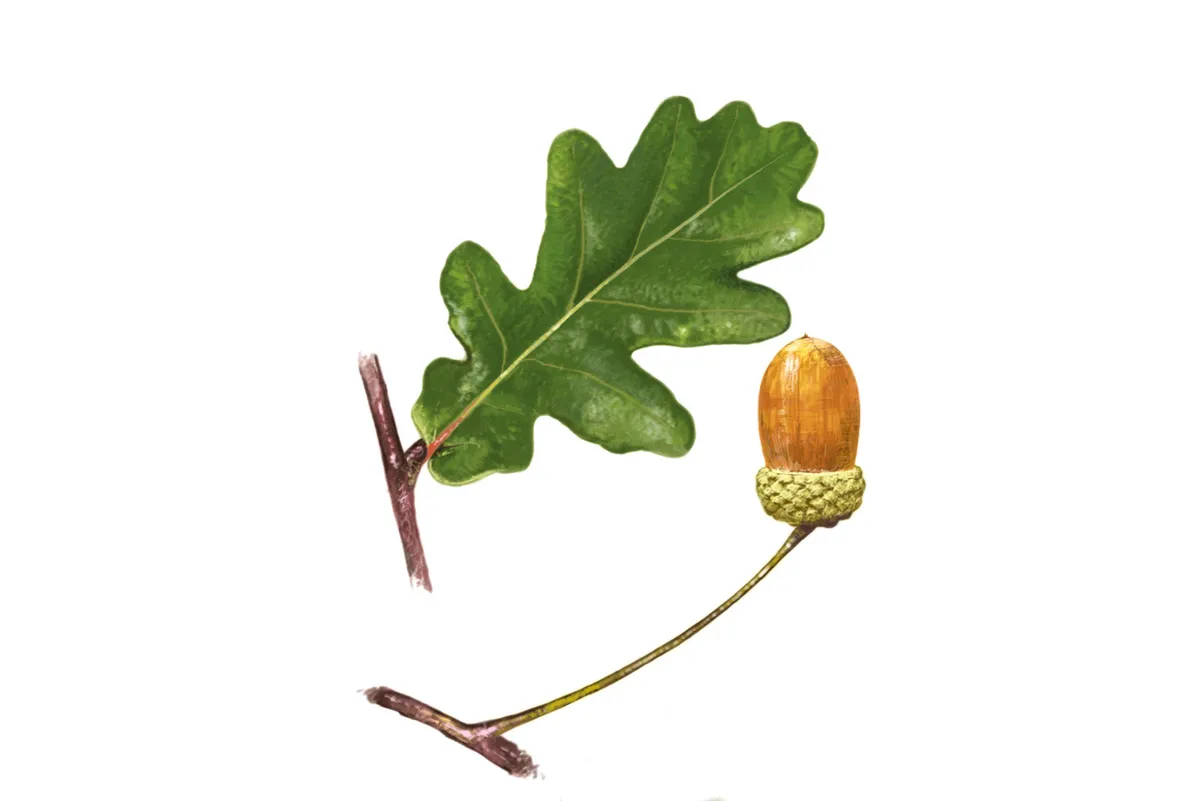
- Leaves: Short to almost no stalk, 4-5 lobes starting at stalk
- Flowers: Long yellow catkins
- Acorn: Longer acorn stalks with single acorn per stalk
Sessile oak (Quercus petraea)
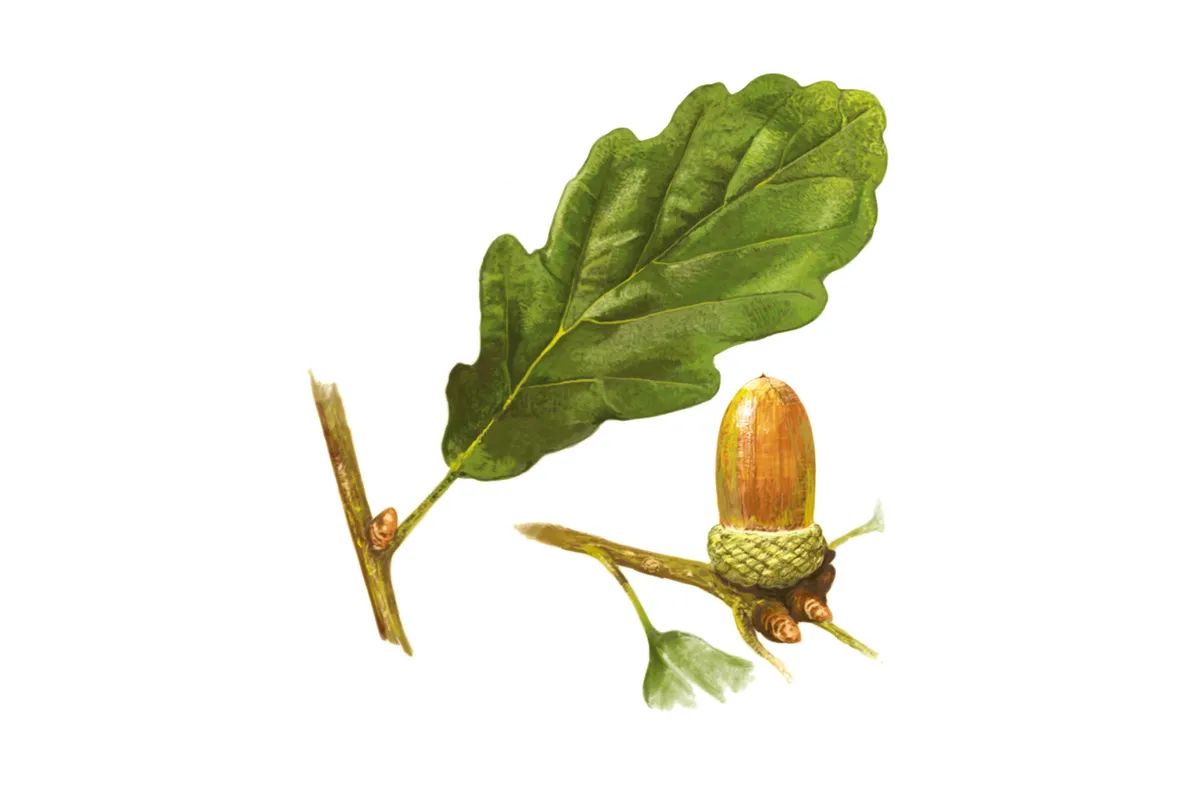
- Leaves: Longer stalks, lobes not as deep as the English oak and don’t start at stalk
- Flowers: Contains both male and female flowers, the male flowers are green catkins and the female look like red flower buds
- Acorn: Very short to no acorn stalks, acorns usually in pairs or clusters
They have slightly different soil preferences and distributions, with sessile oak being more common in the north and west, also favouring more acid soils.
Hybrids with intermediate characters occur in many places where the two species grow close together.
How long do oak trees live?
Oak trees can live for over 1,000 years; however, a more normal age would be around 600 years.
It is said that an oak spends 300 years growing, 300 years living and 300 years in slow decline.
Please note that external videos may contain ads
The Secret Life of the Oak Tree: BBC Gardeners' World
When is an oak classed as an ancient tree?
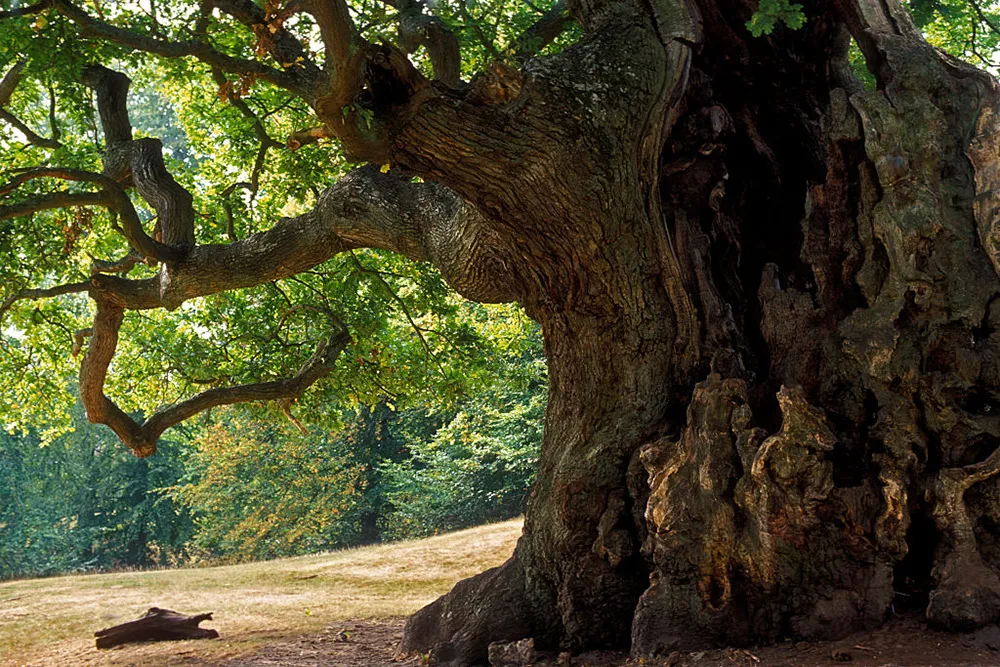
For an oak to be classified as ancient tree it needs to have reached 400 years.
However, an oak may start showing the characteristics of an ancient oak from around 300 years.
An oak in the age range of 150-300 years is usually known as a veteran tree.
What are the characteristics of an ancient oak?
Some characteristics that identify an ancient oak; the trunk having a large girth, hollowing or cavities in the trunk, loss of bark, canopy has a large quantity of dead wood.
Did you know Oxfordshire has Europe’s largest collection of ancient oak trees?
Eight ancient oaks to visit
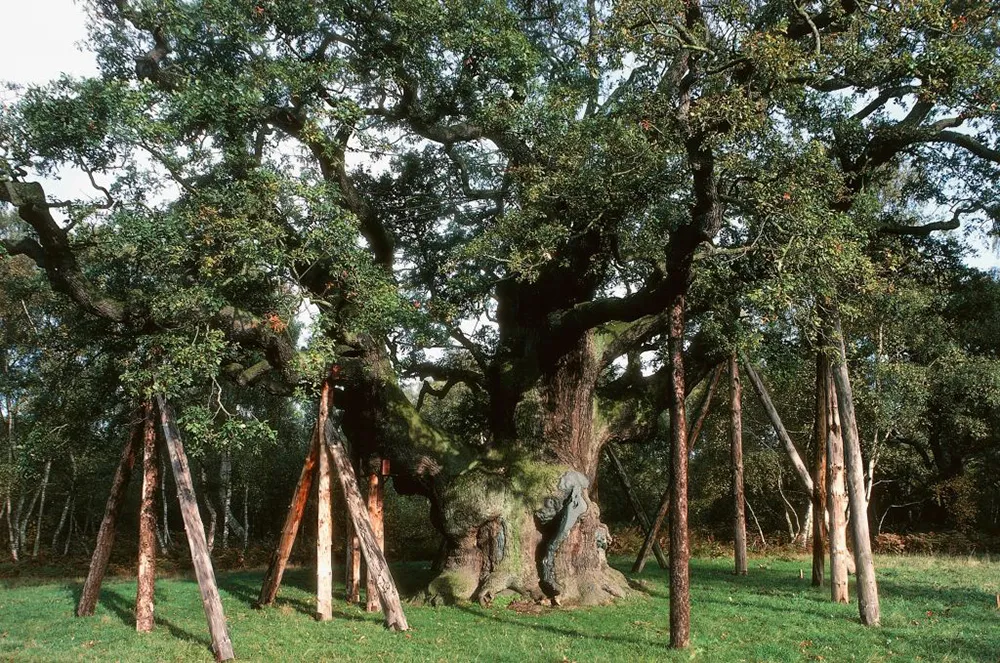
- Cadzow Oaks - South Lanarkshire: This group of about 300 sessile oaks, including some of the oldest and largest broadleaved trees in Scotland, survives in medieval wood pasture near Hamilton. It is thought that they were planted in the 12th century.
- Darley Oak - Linkinhorne, Cornwall: This oak on the edge of Bodmin Moor is believed to be over 1,000 years old. According to local folklore the tree has magical and healing properties. The Darley Oak stands in a private garden.
- Fredville Oak - Nonington, kent: With a girth of over 12m, ‘Majesty’ is reputedly England’s largest oak. Measured in May 2022 it stood at a height of 19m
- Great Oak - Woburn Park: The largest oak in Bedfordshire has appeared on maps since 1600.
- Major Oak - Sherwood Forest: This Nottinghamshire oak, with links to Robin Hood, is suitably decrepit – its limbs need to be propped up.
- Marton Oak - Cheshire: This 1,200-year-old sessile oak is one of the oldest in England. Though its trunk has split into three sections it still produces an annual crop of acorns
- Powis Oak - Welshpool: Growing at Powis Castle, home to the tallest English and sessile oaks in Wales, this specimen has a girth of 7.85m.
- Queen Elizabeth I Oak - Cowdray Park, West Sussex: The third-biggest sessile oak ever recorded has a girth of 12.5m. When measured in 2021 it had a height of 8.54m and girth at 1.5m had increased to 13.18m.
Please note that external videos may contain ads
The English oak tree that taught the world a lesson © BBC World Service
600 year old Bretton oak tree felled
On the 29th June 2022 Peterborough City Council began felling a 600 year old oak tree in Ringwood Bretton because it was causing "structural damage" to nearby homes.
The tree, which dates from the 14th century, was one of the last standing oaks from the original Grimshaw Woods.
The oak tree ecosystem
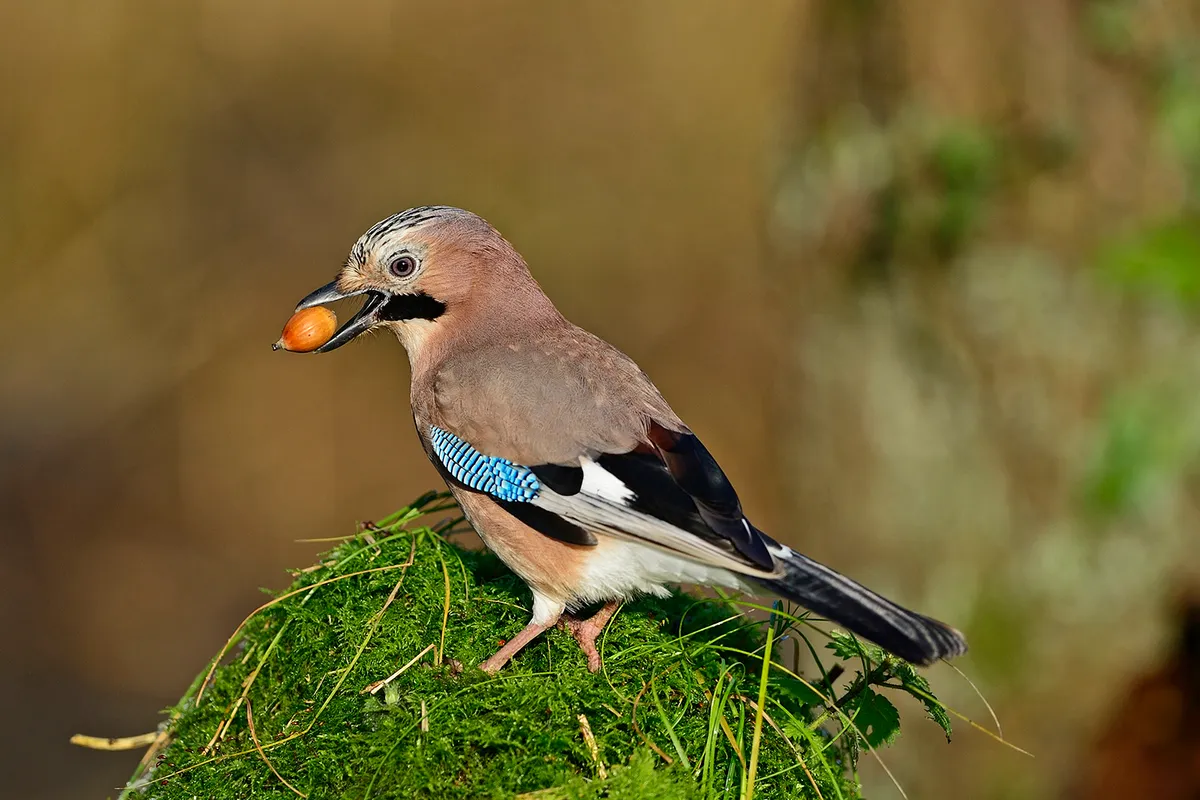
Of all the native forests in the UK the biodiversity of an oak forest is larger than any other, involving a variety of mosses, lichen, fungi, invertebrates, birds and mammals
From the aphids in the oak canopy providing honeydew for the purple hairstreak butterfly (Favonius quercus) to the large number of insect species providing an abundance of food for birds.
Pied flycatchers and marsh tits favour the oak for nesting with the many crevices providing ideal nesting spots.
While on the ground, stag beetles and flat-backed millipedes can be found feeding on rotting plant matter. In some of the larger oak forests wild boar can be found foraging for fallen acorns.
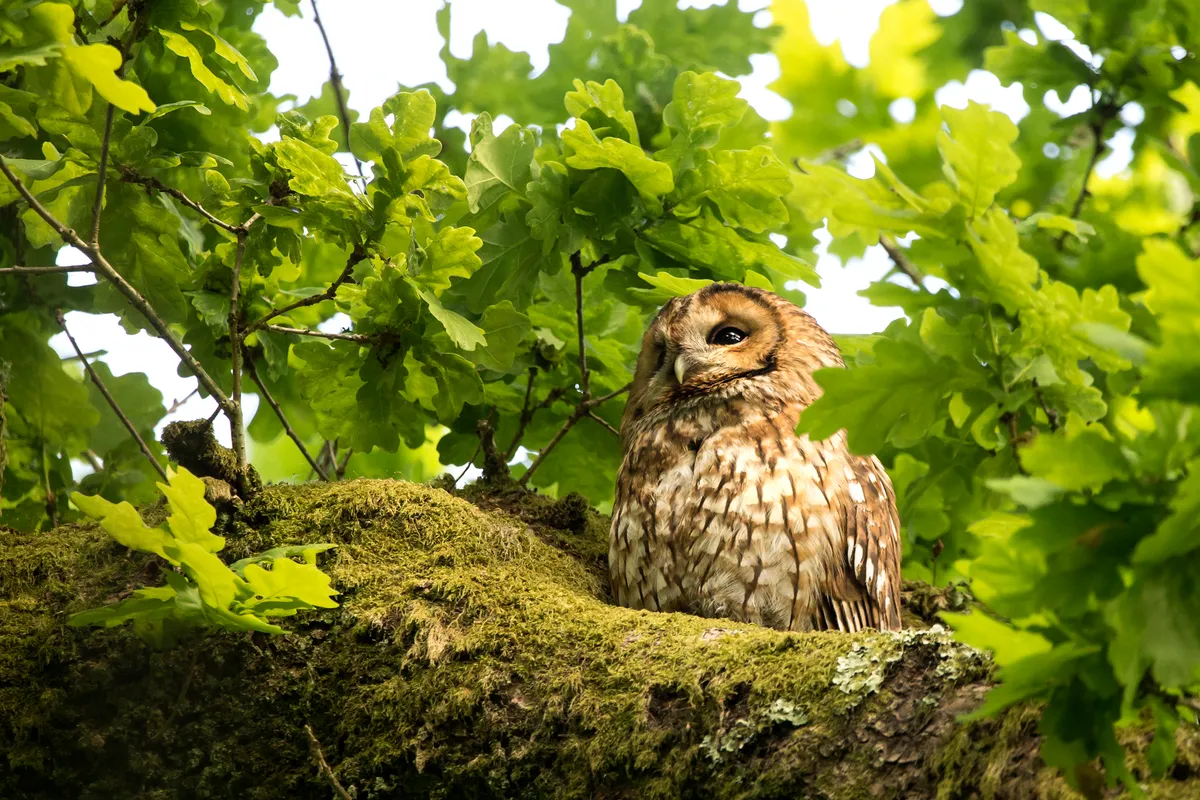
Two seasons in an oak tree
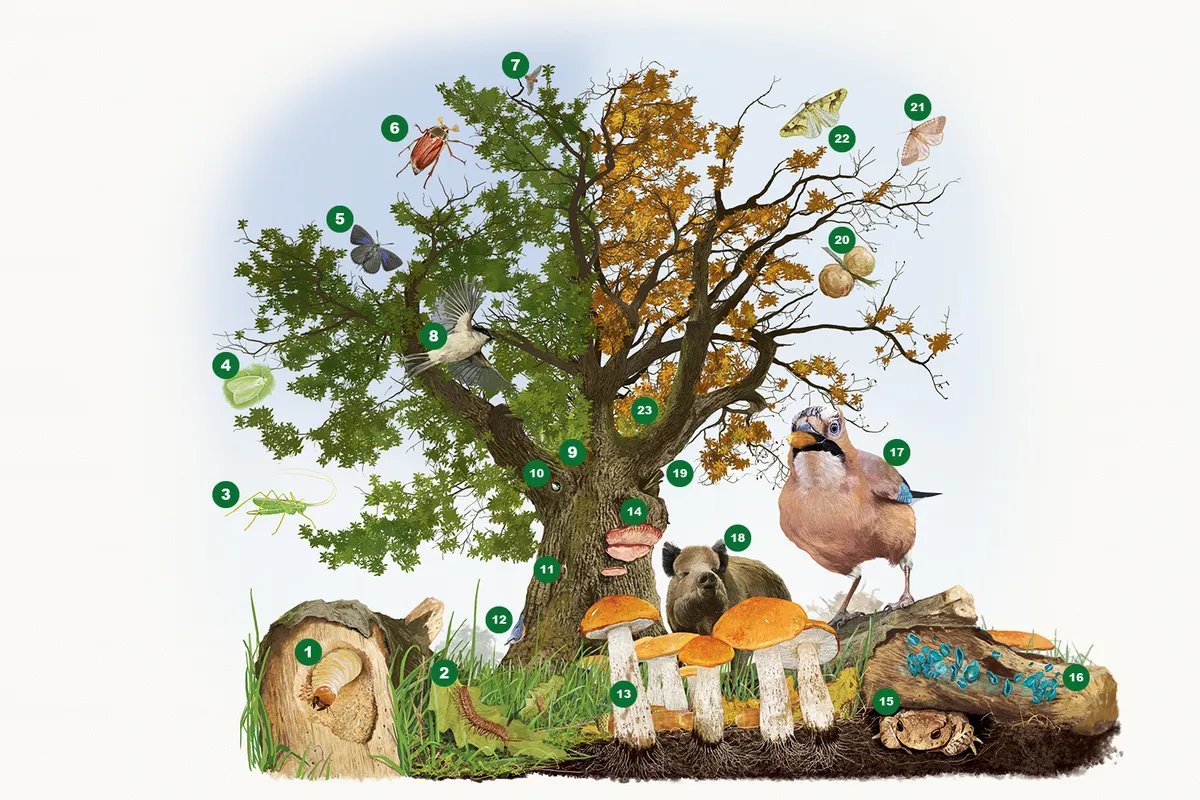
Discover some of the many species living in, on and under an ancient English oak in summer and autumn.
- 1: Stag beetle larva: Eats rotting wood for up to seven years before turning into an adult.
- 2: Flat-backed millipede: Lives in the leaf litter, feeding on mildew and decaying plant matter.
- 3: Oak bush-cricket: A carnivorous species found in the oak canopy.
- 4: Green oak tortrix: Flies May–June; this moth’s caterpillars can defoliate entire trees.
- 5: Purple hairstreak: Drinks honeydew from aphids in the oak canopy.
- 6: Cockchafer: This leaf-eating beetle can strip whole branches.
- 7 & 19: Noctule bat: Males entice females to their ‘mating roosts’ in old woodpecker holes.
- 8: Marsh tit: Nests in small cavities in the trunk or branches.
- 9 & 23: Polypody fern: Festoons large boughs, mostly in wet regions.
- 10: Pied flycatcher: Favours oak for nest sites and caterpillar foraging.
- 11: Treecreeper: Creeps down trunk to hunt for invertebrates.
- 12: Nuthatch: Unlike the treecreeper, usually climbs up trunk.
- 13: Orange oak bolete: Appears under oak in summer and autumn.
- 14: Beefsteak fungus: Meat-like fruiting bodies appear on oak tree from August to November.
- 15: Common toad: Crawls behind loose bark in autumn to hibernate.
- 16: Green elf cup: Sprouts on fallen, rotting oak branches in autumn.
- 17: Jay: Busily harvests acorns, burying much of its haul.
- 18: Wild boar: Roots for acorns in some of England’s large forests.
- 20: Oak apple gall: A growth on twigs caused by a tiny gall wasp – its larvae live inside.
- 21: Winter moth: Swarms of larvae strip oak foliage; can be a pest.
- 22: Mottled umber: This moth’s caterpillars also devour oak foliage.
How introduced pests and diseases affect oaks
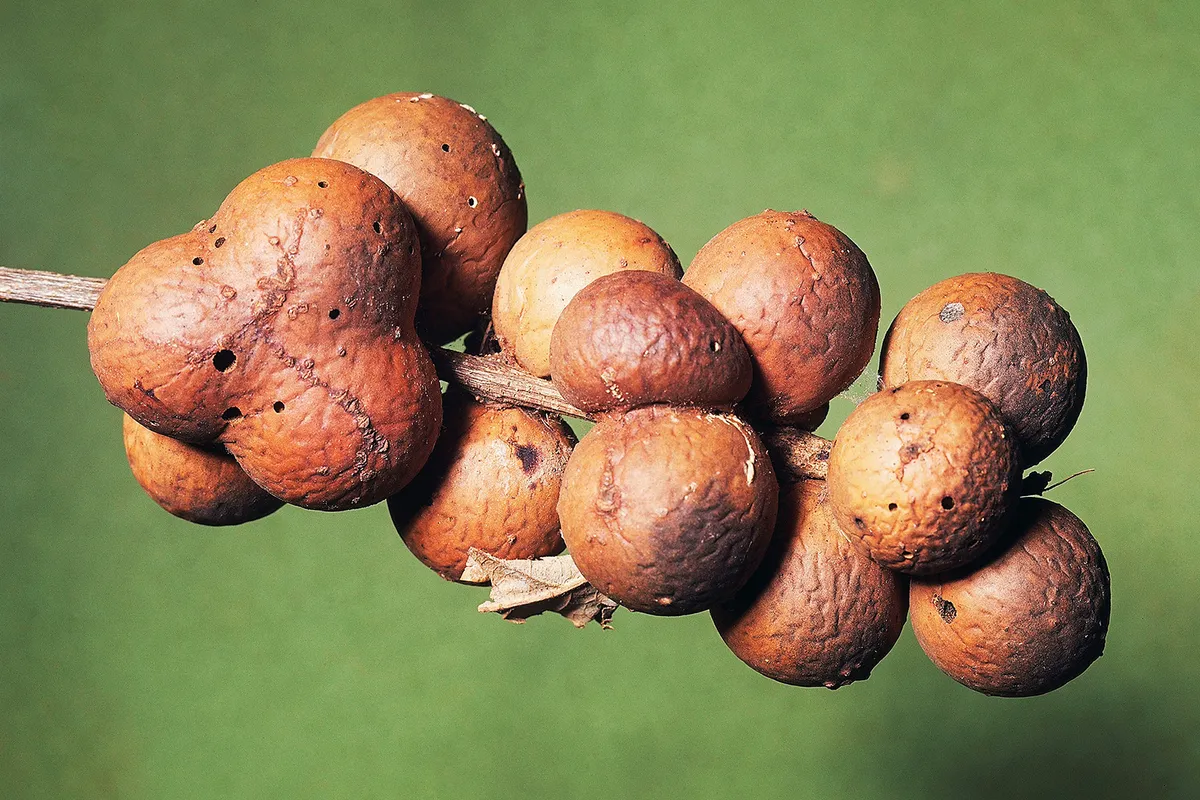
Major challenges have arisen during the past two centuries. When Andricus kollari, the tiny wasp that induces oak buds to form woody ‘marble’ galls, arrived in the 1830s, it was feared that oaks would be devastated, but they have reached equilibrium with their assailants.
More recently, the related wasp species A. quercuscalicis – the knopper galls of which turn acorns into something that resembles woody popcorn – has spread rapidly and can severely reduce the acorn crop of individual trees.
Oak mildew, introduced from North America in 1908, smothers new ‘Lammas growth’ oak shoots in powder-grey deposits in August and slows the infected tree’s growth.
But these pale into insignificance compared with sudden oak death, caused by a fungus-like pathogen imported from North America.
This has the potential to devastate oaks in the same way that dieback is destroying our ash trees, though to date it has been found only in non-native oaks.
The long-term future of oaks depends on maintaining genetic diversity, generating new individuals resistant to pests and diseases.
Intuitively, venerable trees that have survived a millennium of environmental and biological challenges should be a rich source of valuable genes.
That isolated, ancient oak on the village green might be key to the species’ future.
The mystery of oak galls
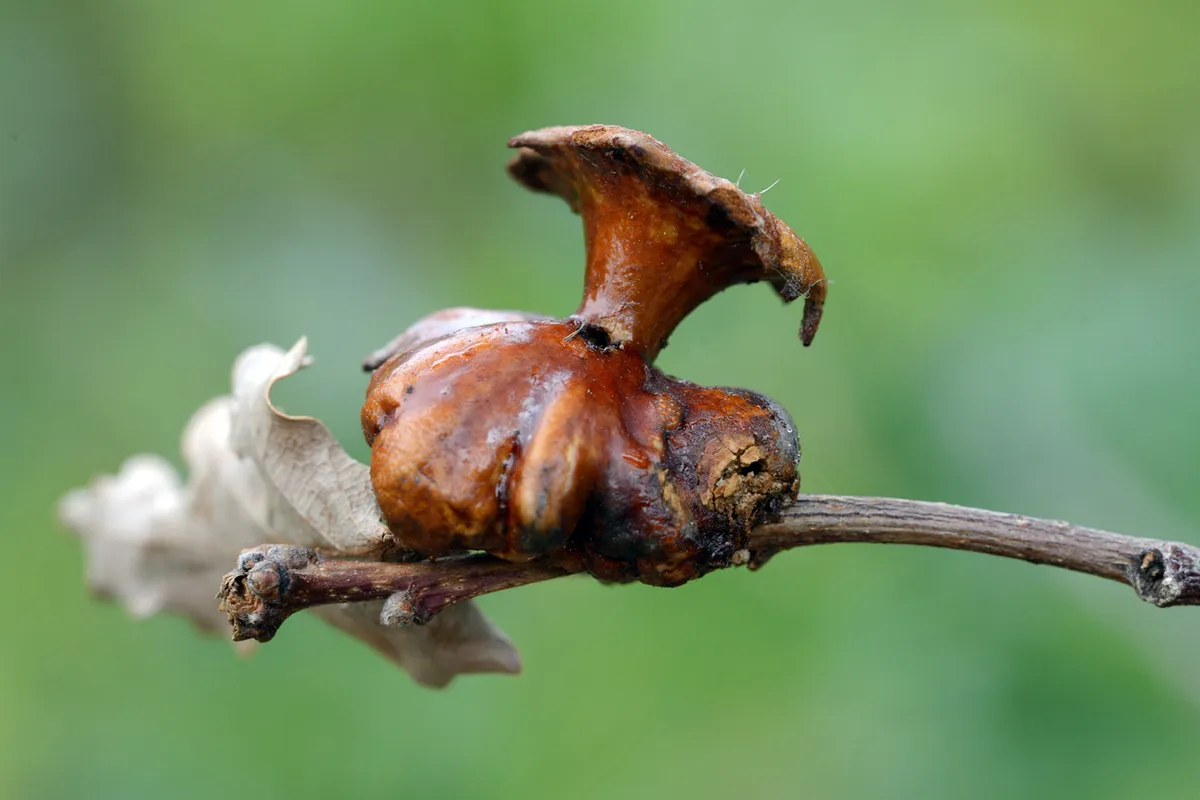
What makes acorns go knobbly?
Knopper galls, as they’re known, are caused by the larvae of a tiny wasp, first recorded in Britain in the 1960s.
It belongs to a famous family of master architects, the gall wasps, which are parasites whose larvae develop inside plants.
There are thought to be around 90 species in Britain and nearly all of them use oaks, giving rise to a weird and wonderful range of galls.
From ‘artichokes’ to ‘apples’, they’re found throughout the year.
But how do galls form?
We used to think trees formed them as damage limitation, but now know the wasp larvae are effectively hijackers.
They seem to secrete chemicals that somehow manipulate their host oak tree into producing abnormal growth.
This includes snug chambers for the larvae, concentrations of nutrients in surrounding tissues for them to eat, and a tough layer of lignin to protect the gall.
Many types of gall have extra defensive features, such as thickened outer layers, false internal chambers or spines.
Do galls help the tree?
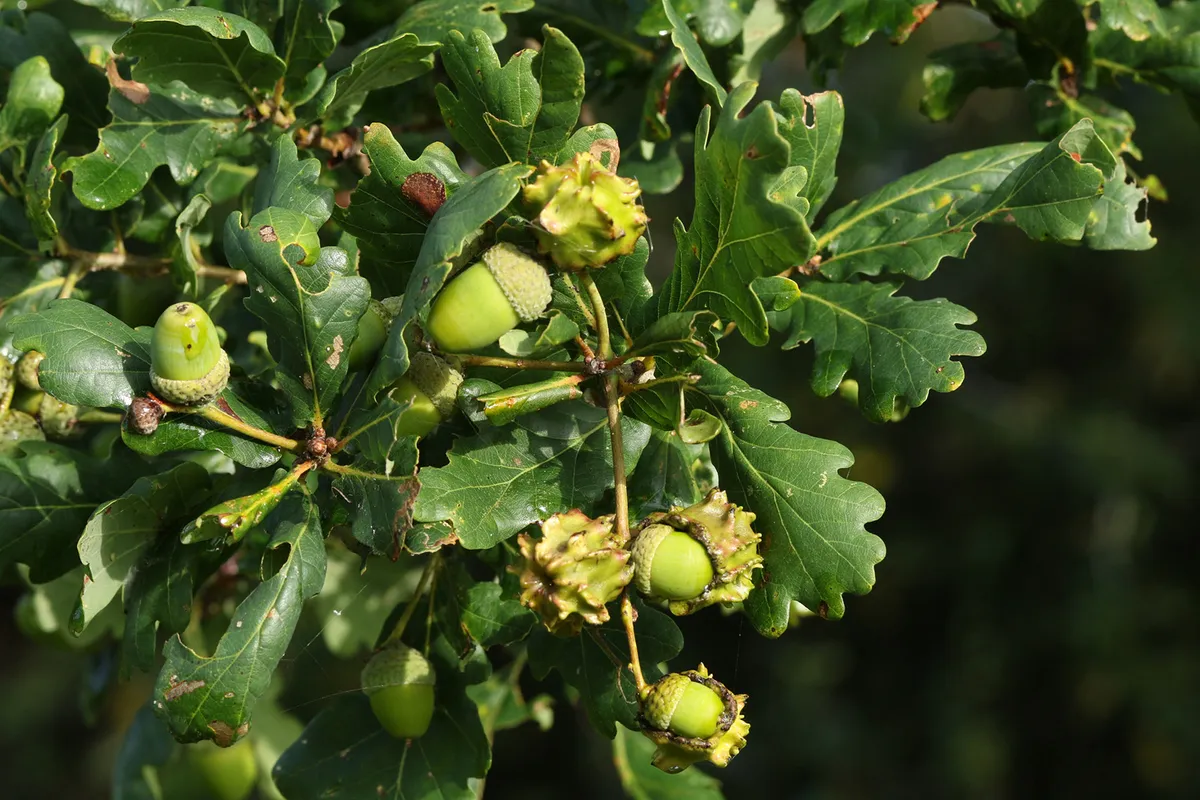
Probably not. But some galls secrete nectar, which attracts ants.
The ants might provide defence against leaf-eating insects, so in that sense could benefit the tree to an extent.
And the wasp larvae aren’t alone in their safe houses. Galls can be home to rich communities, including the larvae of beetles, moths, other gall wasps, and other parasitic wasps and flies, not to mention fungi.
Quite a crowd! So those species benefit, even if the tree doesn’t.
This Q&A originally appeared in BBC Wildlife, and was answered by Laurie Jackson.
Please note that external videos may contain ads
Oak Tree and Wasp Eggs | Life in the Undergrowth © BBC Studios
How important is an isolated ancient oak?

Other than its historical role in the cultural landscape its importance is more than you might suppose.
Freestanding oaks, without competition from close neighbours, can reach their full reproductive potential and will flower and fruit prolifically.
DNA-based techniques have shown that oak pollen can travel as far as 80km downwind to sire acorns on other trees.
So these ancient sentinels – which have survived droughts, floods, freezing winters and disease epidemics during their lifetime – could make a significant contribution to the adaptation of the species during future periods of environmental change.
Does a tree know it's being eaten?
From roots to canopy, many trees can indeed tell if they are being eaten – and by whom.
They have evolved extraordinary abilities to discern chewing by beetles and caterpillars, piercing and sucking by bugs, acoustic vibrations from grasshoppers, microbes left by various animals.
Many trees respond by making more unpalatable chemicals or growing tougher leaves.
Oaks, for example, produce more tannins and phenol compounds after heavy grazing by caterpillars.
This Q&A originally appeared in BBC Wildlife, and was answered by Alex Morss.
How does a tree know when to produce fruit or nuts?
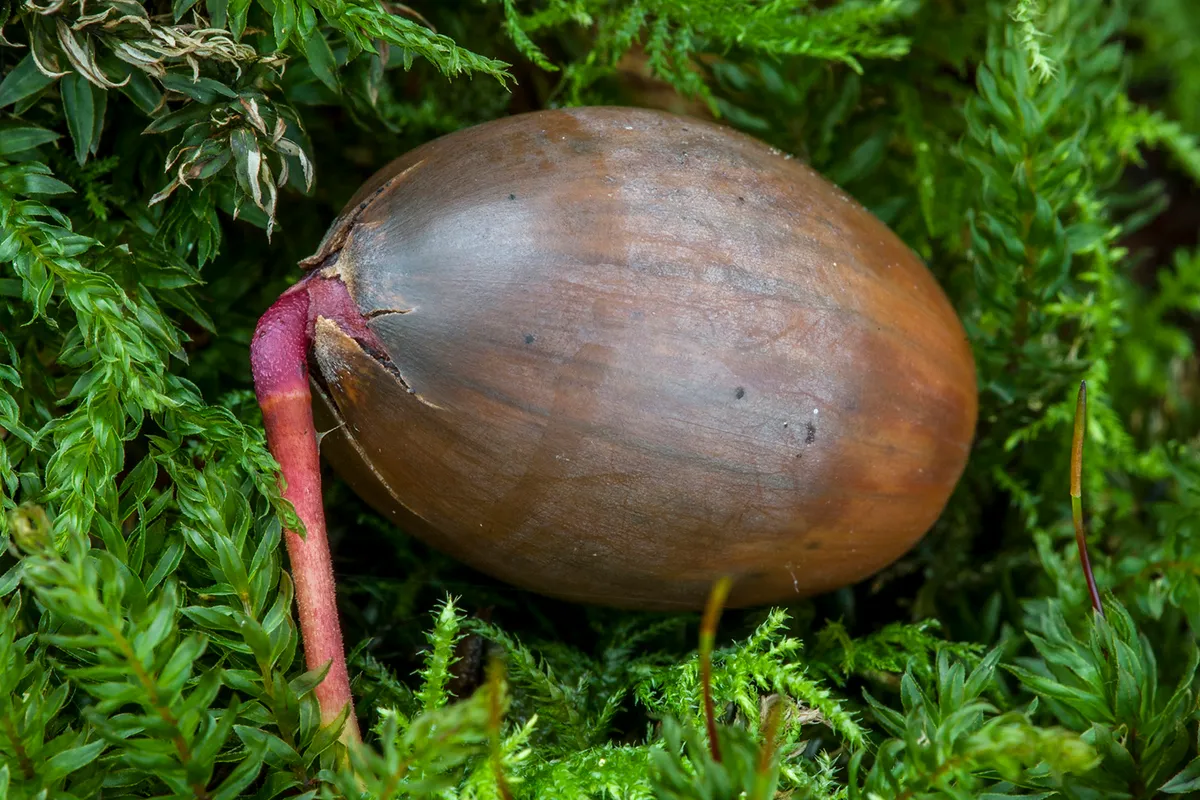
As spring rolls in, a light receptor (known as a phytochrome) enables a tree to detect the shortening nights and gives the signal to wake up after the winter slumber.
Once awake, a tree senses the temperature: if it is too cold, it delays blossoming until conditions improve. After pollination, the ovary swells to produce fruit and the ovules become seeds.
Yet a tree doesn’t automatically yield copious quantities of fruit or nuts. First, this can be an energy-draining exercise. Second, a tree must manage its output to ensure seed dispersal.
If an oak produced abundant acorns every year, the surrounding forest would be inundated with jays, boar, deer and squirrels.
Such intense predation would leave few acorns uneaten and the tree with less chance of reproducing. To combat this, trees have fallow years, only producing a bumper crop every few years, known as a mast year.
Scientists now believe that trees communicate through a connective network of fungus known as mycorrhiza, which gives the signal to either produce an abundance of fruit or nuts – or to hold off.
This Q&A originally appeared in BBC Wildlife, and was answered by Dave Hamilton.
Are oaks prone to lightening strikes?
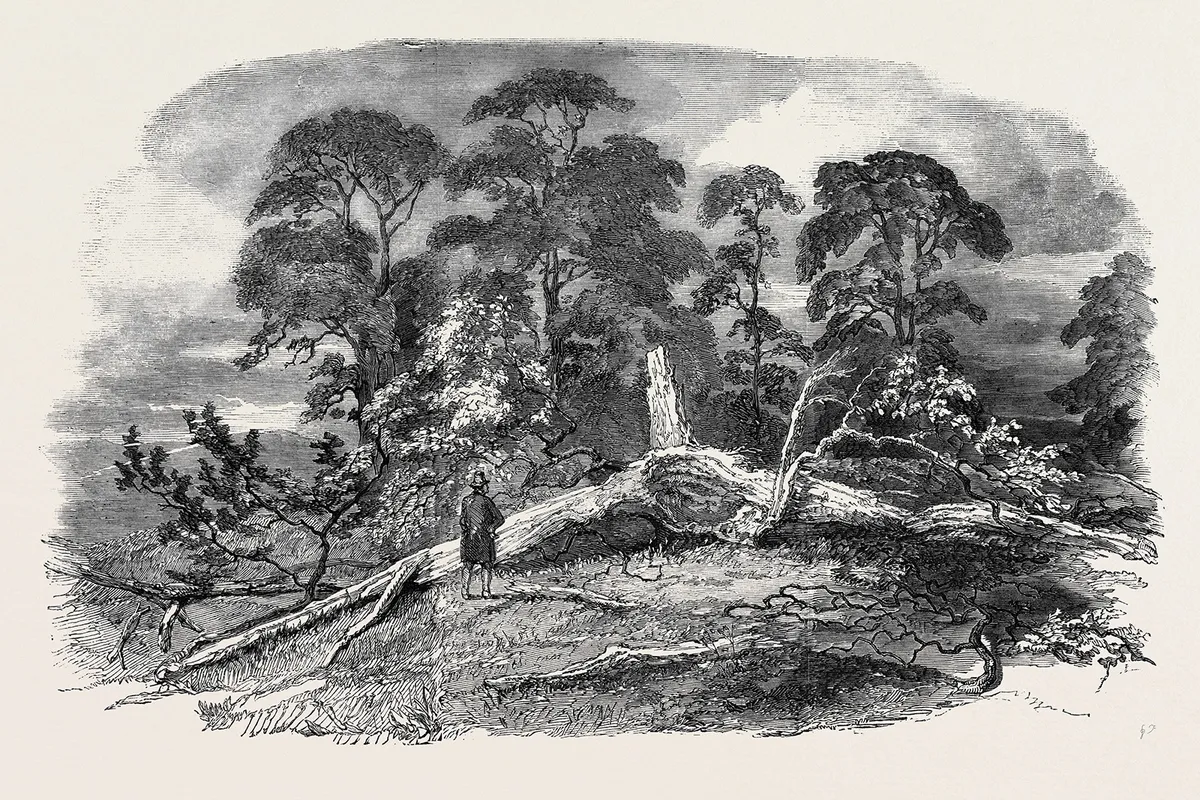
Lightning doesn’t always strike the tallest object in the landscape, but at any given location, the taller a tree grows, the more likely it is to be struck, especially if in an exposed, isolated position.
Oak is said to be especially vulnerable, but this impression might be because these trees are so long-lived and are exposed to more thunderstorms during their lifetime, and perhaps have a better capacity than most to survive damage.
What are the beetles on oak trees with extremely long noses?
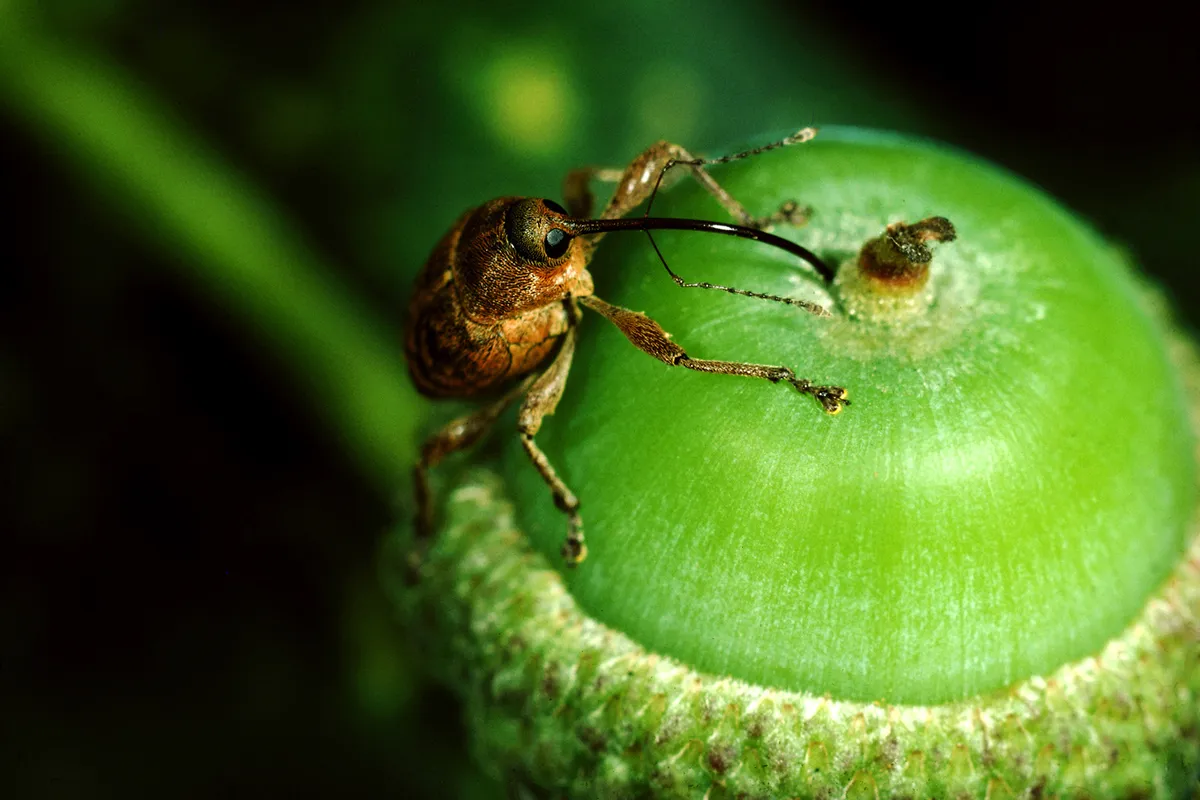
These are the acorn weevils Curculio glandium and C. venosus.
The long snout (rostrum) has tiny but powerful jaws at its tip, which the female uses to drill a deep hole into the middle of a developing acorn.
Then she turns round and using a telescopic egg-laying tube deposits a single egg into the centre. The grub feeds on the growing acorn and when it drops in autumn the larva chews an escape hole and pupates in the soil.
All weevils have snouts of varying sizes, with length usually correlating with larval foodstuff and egg deposition site – so short-snouted weevils chew a much shallower hole.
Males and females both have snouts, but the egg-laying female of the species almost invariably has the longer.
This Q&A originally appeared in BBC Wildlife, and was answered by Richard Jones.
Main image: English oak tree at sunrise in Ashdown Forest, Sussex, England, UK. © James Warwick/Getty
